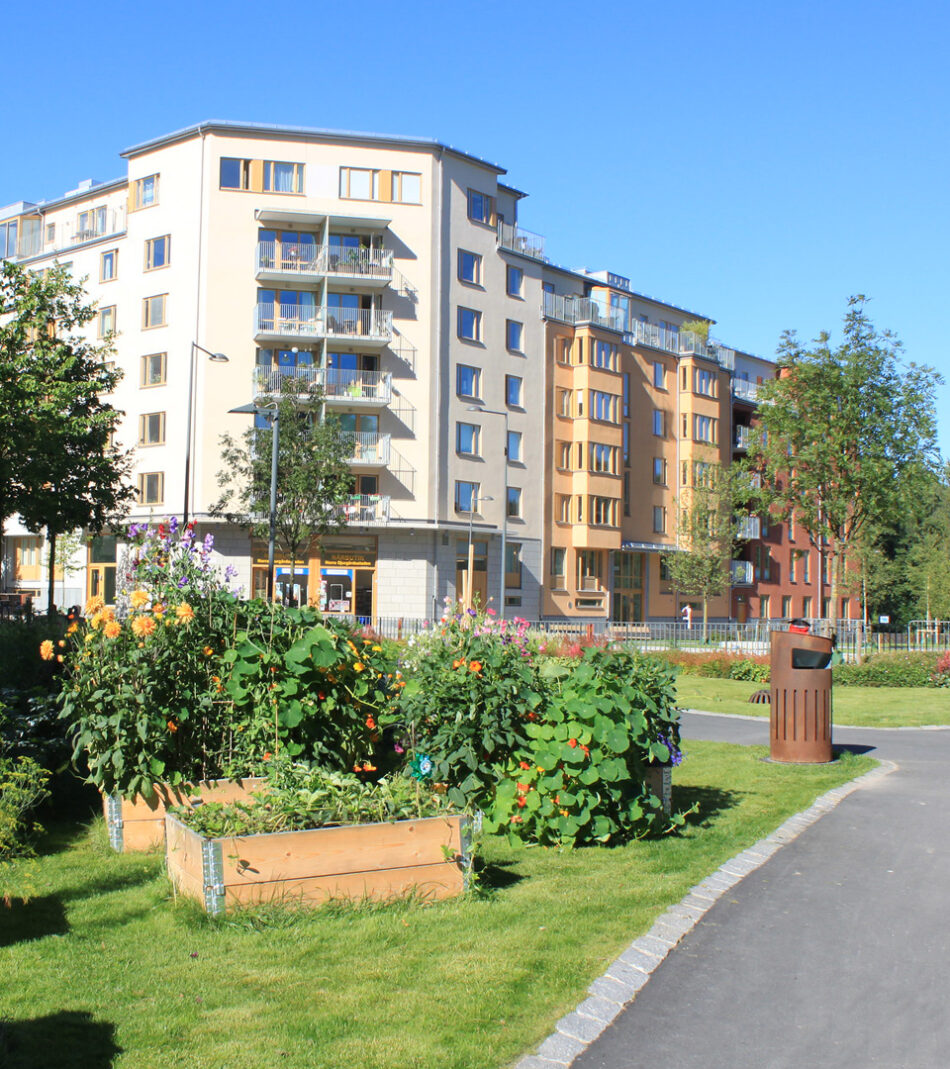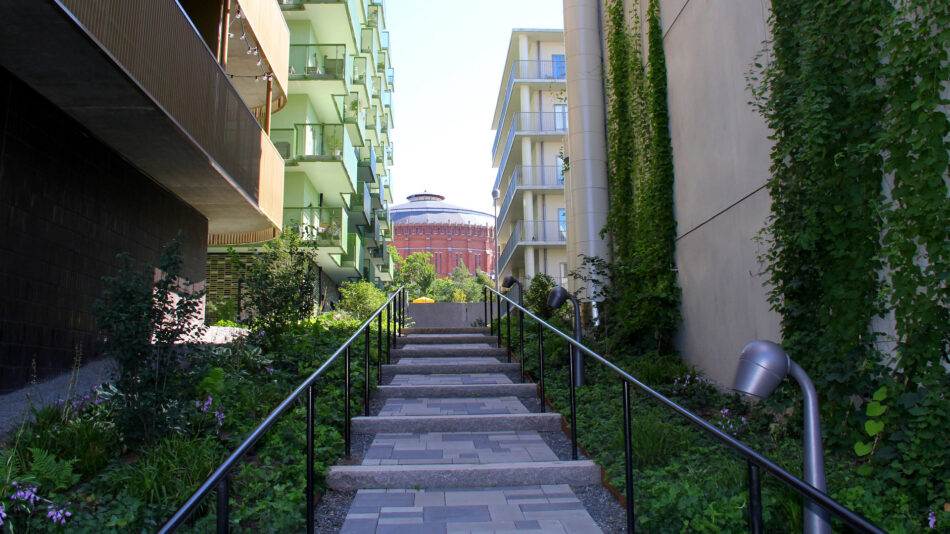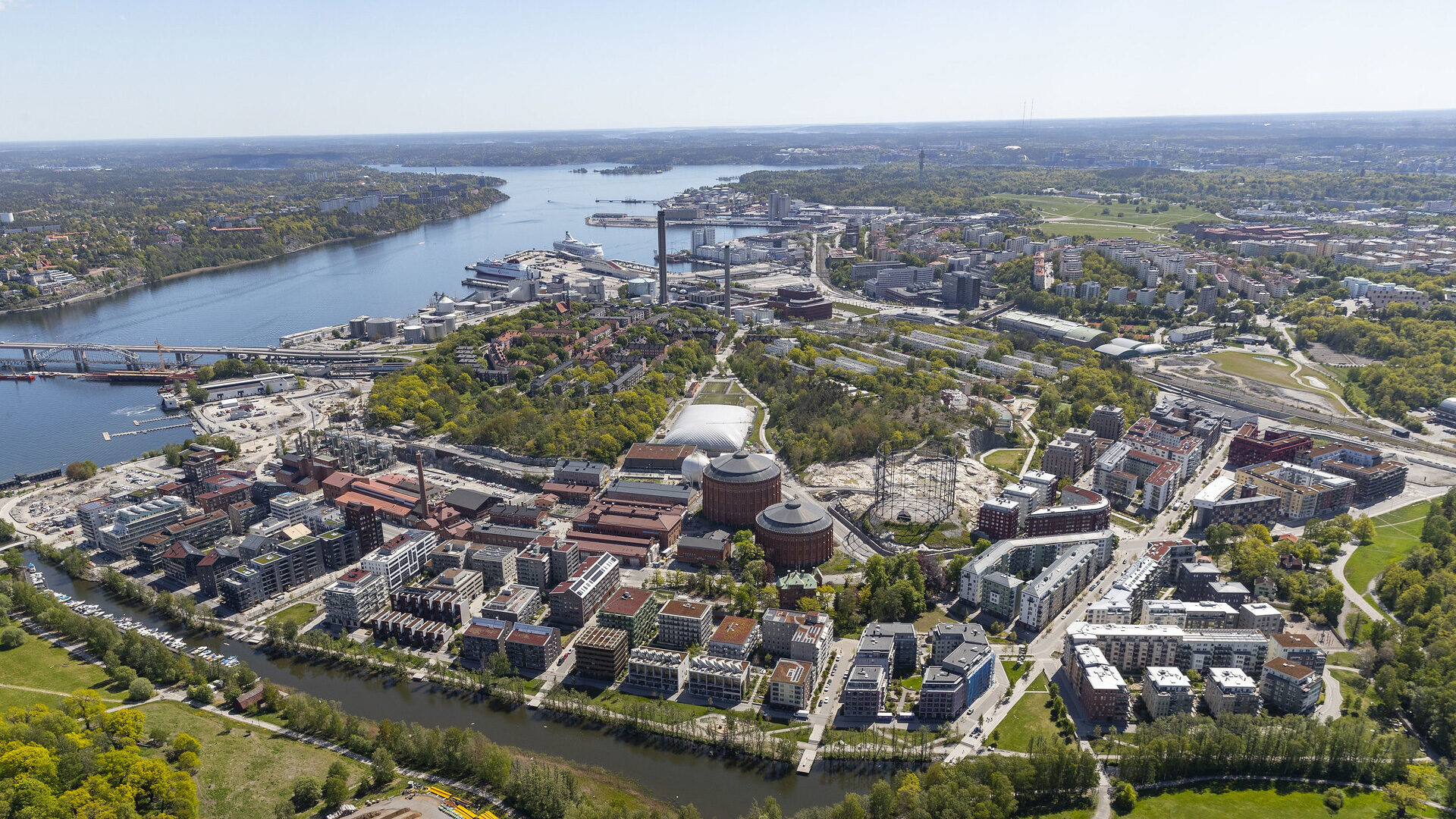The brief

Stockholm Royal Seaport is one of the largest urban development projects in Europe. Spanning 583 acres, the former industrial zone is groundbreaking not just for its sustainability targets, but also for its collaborative approach that has seen Stockholm’s city administrators, businesses, and developers work together to achieve common environmental goals.
Envac was selected to become the waste collection technology partner in order to share the skills, knowledge and expertise gained through being a part of one of Stockholm’s most high-profile developments to date, Hammarby Sjöstad – Sweden’s blueprint for sustainable development.

The project
By 2030, the Seaport is expected to include at least 12,000 new housing units and 35,000 workplaces – all of which will be connected to Envac’s pneumatic waste collection system, one of the many innovative environmental technologies embedded within the development’s fabric.
With ambitious targets focused on effective resource management and delivering an overall structure that supports multiple ecosystems, Stockholm Royal Seaport required the highest standards from its partners and a waste collection solution that provided usability, functionality and sustainability in equal measure.
With both waste inlets and self-emptying litterbins all over the area Envac has ensured that waste can always be deposited and quickly transported to the site’s waste collection station.

Data collection for best environmental performance
The Envac system collects data on how the system is used. The waste inlets are opened with a short frequency identification tag, and the system loads when, where, how much and what type of waste is disposed.
The data is used to provide feedback to users on recycling levels and to system administrators on e.g. operational optimization, not least with regards to energy consumption.
The waste collection station is planned for the best possible durability. It is located in a rock chamber. The inclusion of a heat exchanger in the station enables heat generated from the system to be directed back into the chamber, ensuring that it’s not just the waste that is handled sustainably.
A weighing system is used for the containers to ensure the maximum degree of filling before emptying.
There is no need for manual collection or transport of household waste in the living area. Traffic with collection vehicles has been reduced by 90%, creating a safer living environment by removing on-site waste collection vehicles.
10 tons waste/day
using electricity and airflow instead of resource intensive and unsustainable methods reliant on fossil fuels
4 separate waste fractions
Paper/Plastics/Rest and street litter
400 waste inlets
conveniently located across the area for easy disposal
100 self-emptying litterbins
in the public areas
Best sustainable urban project
Stockholm and Stockholm Royal Seaport won the award for best sustainable urban development project in the Sustainable Communities category, which was presented at the UN Climate Change Conference in Paris 2015 by the C40 Cities Climate Leadership Group – a network connecting more than 80 of the world’s megacities.



